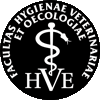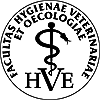Quantitative genetics
TASK 1:
Evaluate the variability of weight in two groups of mice and compare the results. Use the arithmetic average and variance.
First group: 15.5 g, 10.3 g, 11.7 g, 17.9 g, 14.1 g
Second group: 20.2 g, 21.2 g, 20.4 g, 22.0 g, 19.7 g
TASK 2:
In eight ducks, width of head and length of wing was measured (table).
| Duck | Width of head (cm) | Length of wing (cm) |
|---|---|---|
| 1 | 2.75 | 30.3 |
| 2 | 3.20 | 36.2 |
| 3 | 2.86 | 31.4 |
| 4 | 3.24 | 35.7 |
| 5 | 3.16 | 33.4 |
| 6 | 3.32 | 34.8 |
| 7 | 2.52 | 27.2 |
| 8 | 4.16 | 52.7 |
- Count the arithmetic average and standard deviation for these two traits (width of head and length of wing).
- Use the correlation coefficient to find out what correlation is between the two traits.
TASK 3:
The height of parents (average of father and mother) and their children was measured (table).
| Height of children (cm) | Height of parents (cm) |
|---|---|
| 175 | 175 |
| 180 | 190 |
| 177 | 180 |
| 160 | 175 |
| 165 | 175 |
| 175 | 173 |
| 185 | 195 |
| 175 | 185 |
| 183 | 172 |
- Count the arithmetic average and the variance for the height of children and parents.
- Use the correlation coefficient to find out what correlation is between the height of parents and children.
- Count the narrow-sense heritability for the height (use regression coefficient).
TASK 4:
Heritability of height in wheat h2N = 0.7. There is a trend to reduce the height of wheat by selection. Will this goal be reached promptly or slowly?
TASK 5:
The height in humans has heritability h2N = 0.9. How much is the phenotype influenced by the environmental conditions?
Content
- Biology
- Chemical composition
- Non-cellular life
- Prokaryotes and immersion microscopy
- Eukaryotes
- Movement and irritation
- Transport of substances, osmosis
- Mitosis
- Reproduction and development
- Influence of surroundings onto the bioplasm
- Research methods in biology
- Genetics
- Cytogenetics
- Model organism
- Monohybridism
- Polyhybridism
- Polymorphic genes
- Gene interactions
- Inheritance and sex
- Genetic linkage
- Population genetics
- Quantitative genetics
- Nonmendelian inheritance


